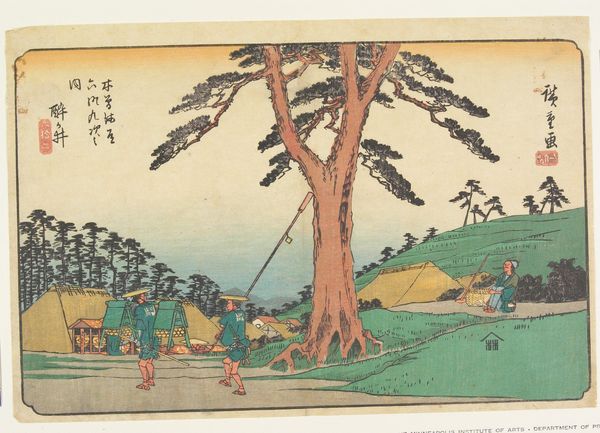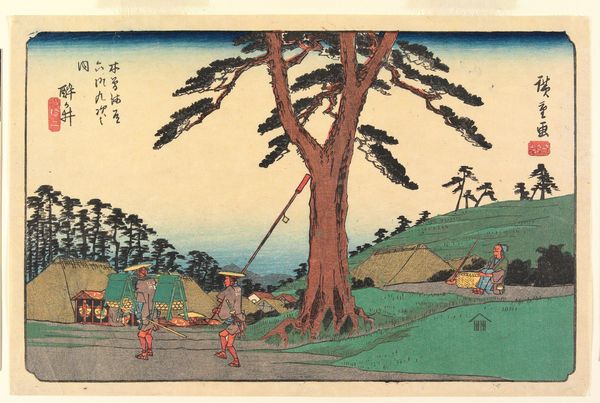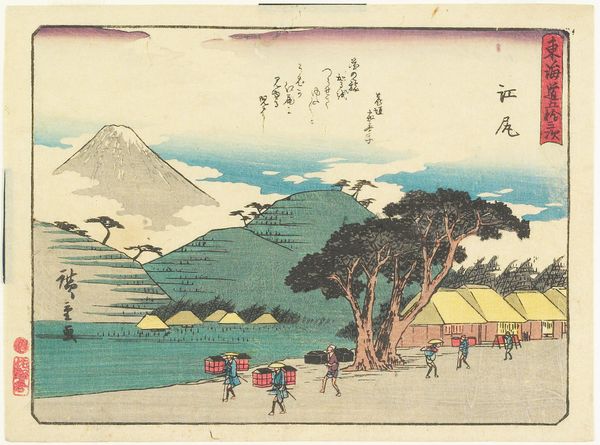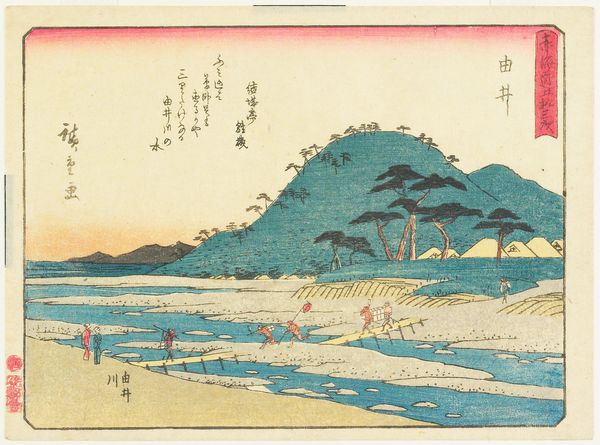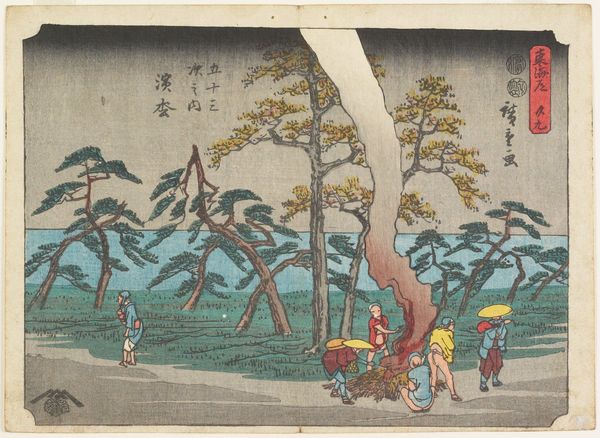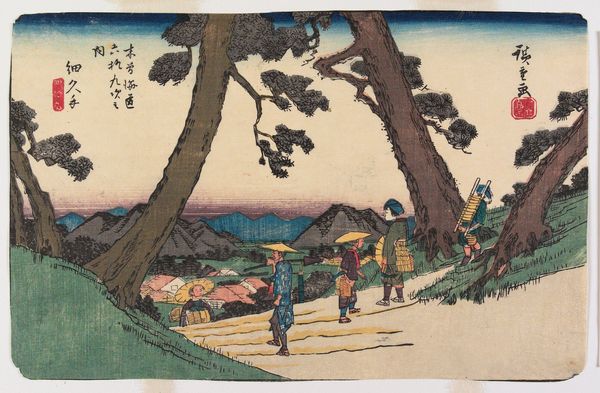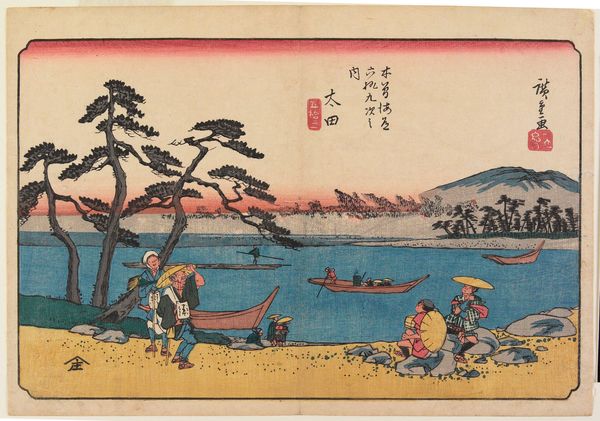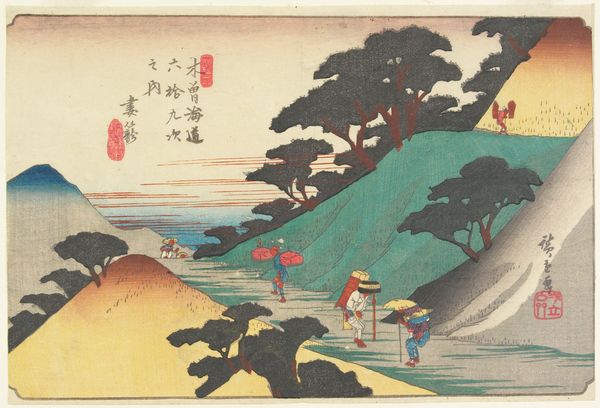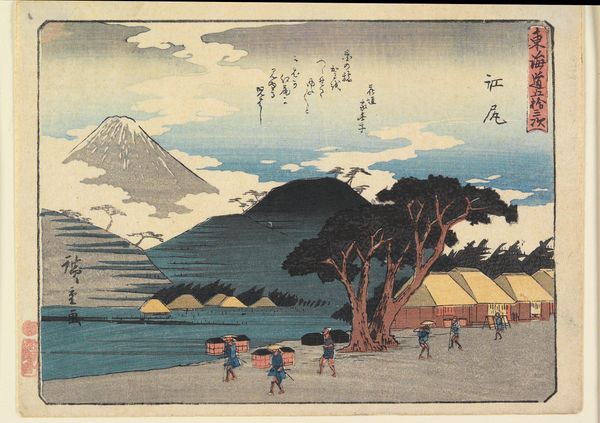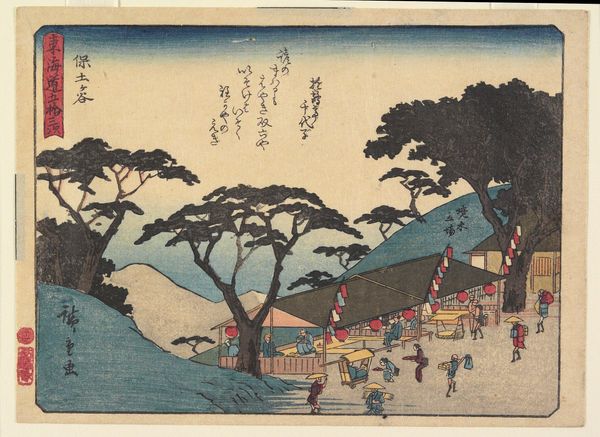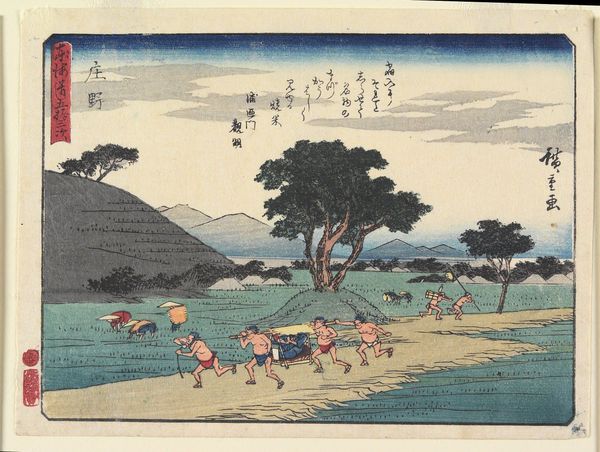
Distanced View of Mugen Mountain and Night Weeping Stone at Sayo Monatain-Pass 1841 - 1842
0:00
0:00
print, ink, woodblock-print
# print
#
landscape
#
ukiyo-e
#
japan
#
figuration
#
ink
#
woodblock-print
Dimensions: 7 11/16 x 12 7/16 in. (19.5 x 31.6 cm) (image)8 11/16 x 12 15/16 in. (22 x 32.9 cm) (sheet)
Copyright: Public Domain
Editor: This vibrant woodblock print, "Distant View of Mugen Mountain and Night Weeping Stone at Sayo Mountain-Pass" by Utagawa Hiroshige, made between 1841 and 1842, is fascinating. The colours are so striking and fresh, almost defying its age! What do you find particularly interesting about this work? Curator: Considering Hiroshige’s ukiyo-e practice, I see a strategic focus on the materials and the processes used to make these prints so widely accessible. The woodblock printing process itself, the specific inks chosen, and even the type of paper employed— these choices directly impact how the landscape is perceived and consumed. We can even consider who had access to these landscapes, rendered as multiples available for purchase. Editor: So, it’s less about the idealized landscape itself and more about the print’s journey into people’s lives as a commodity? Curator: Precisely. We can delve into the labor involved. Imagine the collaborative effort to create these prints! The artist, the wood carvers, the printers... each contributing to the final product. This highlights how art-making can be a communal and industrially structured endeavour. What do you think about how this relates to consumption? Editor: That's a great point. Seeing it as something almost mass-produced, shifts my understanding. Were these prints expensive for the time? Curator: Ukiyo-e prints were relatively affordable. Because of the materials and manufacturing processes, they were designed for a burgeoning middle class. What seems picturesque also served to be a relatively accessible piece of cultural life. Editor: Thinking about the economics and accessibility transforms the image. I appreciate understanding art not only by how it looks but how it came into being, and who could afford it. Curator: Absolutely. By examining the materiality and social context, we gain a deeper understanding of the artist's intention and the artwork's cultural significance.
Comments
No comments
Be the first to comment and join the conversation on the ultimate creative platform.
